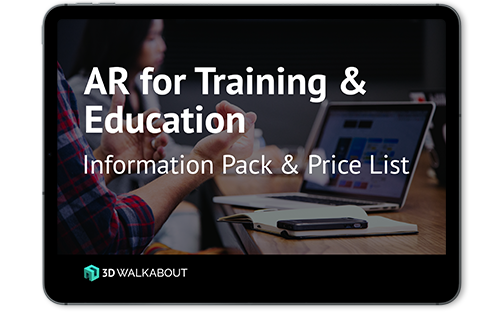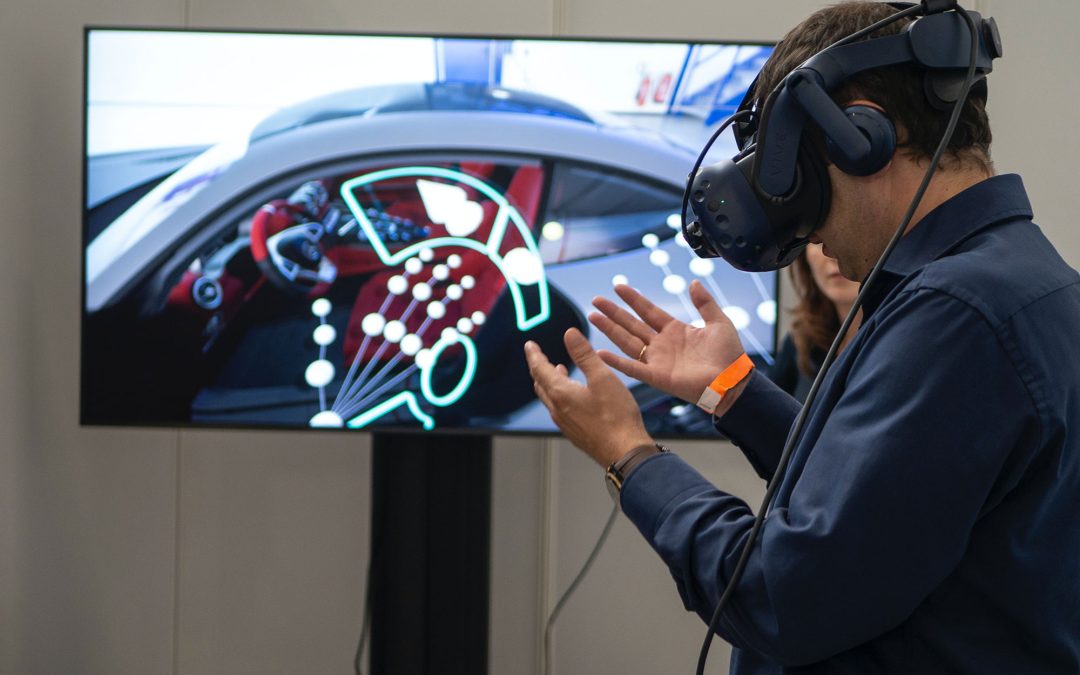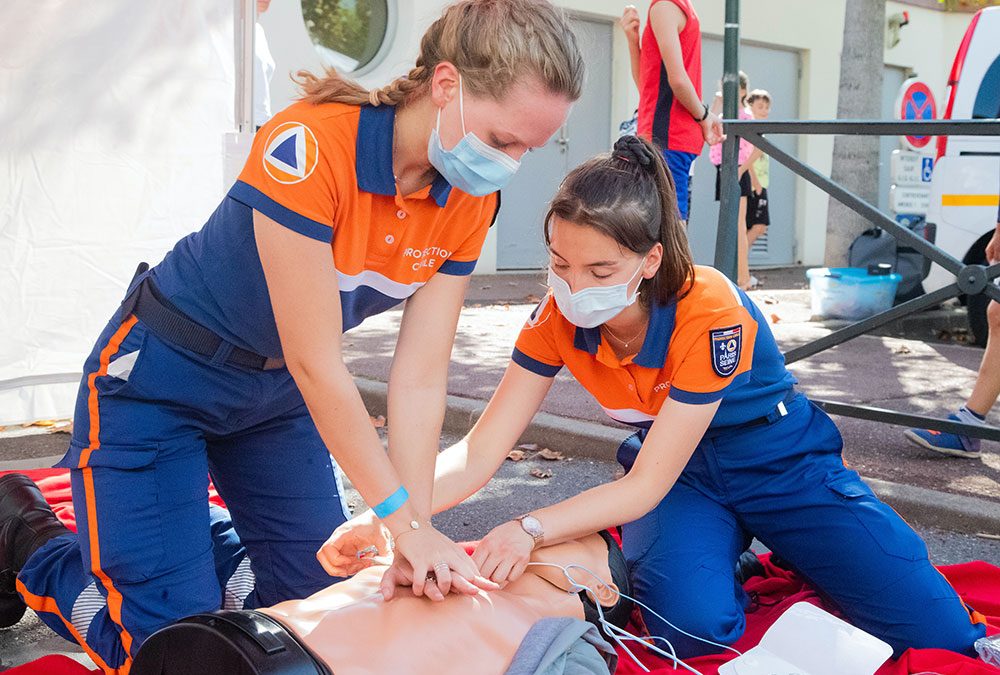AR for Training & Education
3D Walkabout is an Australian based AR studio that designs AR apps for the Training & Education sector that improve the way companies train & their workforce.

Augmented Reality (AR) for Training & Education
Augmented reality (AR) holds immense potential in the training and education sector, changing the way knowledge is imparted and practical skills are acquired. In workforce training, AR can overlay digital content onto real-world tasks, providing step-by-step guidance and enhancing understanding of complex processes. Maintenance tasks can be simplified with AR instructional manuals, enabling employees to access real-time information and instructions on the go. Office-based jobs benefit from AR by visualising 2D information, such as product designs or marketing materials, in a more engaging and interactive manner. In educational settings, AR serves as a valuable teaching aid, enhancing subjects like design and art with immersive experiences and interactive content, fostering deeper understanding and engagement among students.
What are the benefits of AR for your business?
AR can provide a more immersive training experience, which can lead to improved comprehension and retention of information
AR tuition onboarding can help AR instructors and trainers provide contextualized instructions, thereby enhancing the learning experience
AR safety training can improve safety during training exercises by providing real-time feedback
AR can help identify potential hazards and errors during training exercises
AR workforce training can provide instant feedback on performance, helping trainees to learn and improve their skills quickly
AR education can help create a more realistic training environment, which can better prepare trainees for actual work scenarios
AR can help reduce the cost of training by allowing trainees to learn at their own pace and customize their learning experience
AR can help track the progress of trainees, providing trainers with valuable feedback on the effectiveness of their training programs
AR group training can help build team spirit by providing a shared experience that encourages collaboration and communication among trainees
AR class training can help create a more engaging and fun learning experience, which can encourage learners to continue learning and improving their skills with AR soft skills
How is AR being used to improve training programmes?
AR is being used in Australia to improve training programmes by providing a more realistic and interactive experience for the trainee. AR allows users to overlay digital content onto the real world, providing a more immersive experience. This can be used to improve training programmes in a number of ways.
For example, AR can be used to provide a more realistic environment for the trainee. This can be done by adding virtual objects or characters into the real world, which can help to improve the trainee’s understanding of the task or scenario they are being trained for.
AR can also be used to simulate dangerous or difficult tasks, which can help to prepare the trainee for what they might encounter in the real world. AR can also be used to improve communication between the trainer and the trainee. For example, trainers can use AR to provide instructions or guidance directly to the trainee, or to show them how something should be done. This can help to ensure that the trainee is following instructions correctly and that they understand what is expected of them.
Overall, AR has been shown to be an effective way of improving training programmes. It provides a more immersive and realistic experience for the trainee, which can help them to learn and understand new tasks more quickly and effectively.

Brainstorm your ideas on 1300 00 3392
If you’d like to receive our full ‘AR for Training & Education Information Pack & Price List’ please add your details below.
The industries we work in
AR Training & Education Case Studies
No Results Found
The page you requested could not be found. Try refining your search, or use the navigation above to locate the post.
AR Training & Education News & Articles
AR Training & Education Videos
Frequently Asked Questions
What are the 3 elements of augmented reality?
There are three core elements to AR: 1. A device that captures the real-world environment, such as a smartphone or head-mounted display. 2. A software program that generates computer-generated imagery (CGI). 3. A display or output device to show the augmented reality experience to the user.
Where can I study augmented reality?
Augmented reality is a relatively new technology that is still being developed. However, there are a few places where you can study augmented reality. The first place to look is at universities. Many universities are now starting to offer courses in augmented reality. This is a great place to learn the basics of the technology and how to use it. Another place to look is online. There are a few websites that offer courses in augmented reality. These courses can be helpful if you want to learn more about the technology or if you want to start developing your own augmented reality applications. Finally, there are also a few companies that offer training in augmented reality. This is a great option if you want to get hands-on experience with the technology. It can also be helpful if you want to find a job in the augmented reality industry.
What programming language is needed for AR?
One of the most important aspects of augmented reality is the programming language used to create the AR experiences. There are a few main contenders for this, but the one that seems to be gaining the most traction is Unity. This is a versatile and easy-to-use language that has been used to create some amazing AR experiences. If you’re looking to get into augmented reality development, Unity is definitely the language to learn.
How do I start a career in augmented reality?
If you want to start a career in augmented reality, you first need to learn about the basics of the technology. There are many online resources that can teach you about augmented reality, such as tutorials and articles. You can also find online courses that will teach you about augmented reality and how to use it in your work. Once you have learned about the basics of augmented reality, you can start looking for jobs in this field. There are many companies that are looking for people with experience in augmented reality. You can search for jobs on job boards or websites that list jobs in the augmented reality field.
How do I become an augmented reality engineer?
There is no one specific path to becoming an AR engineer, but there are a few things that will help you on your way. Firstly, it is helpful to have a strong technical background in computer science or engineering. Secondly, it is important to have experience with Unity or other 3D programming tools. Finally, it is also beneficial to have some knowledge of graphic design and user interface design. These are just a few things that will help you on your journey to becoming an AR engineer. There are many other resources available online and in libraries that can help you as well. The most important thing is to keep learning and stay curious about this growing field.
What are the 3 elements of augmented reality?
There are three core elements to AR:
1. A device that captures the real-world environment, such as a smartphone or head-mounted display.
2. A software program that generates computer-generated imagery (CGI).
3. A display or output device to show the augmented reality experience to the user.
Where can I study augmented reality?
Augmented reality is a relatively new technology that is still being developed. However, there are a few places where you can study augmented reality.
The first place to look is at universities. Many universities are now starting to offer courses in augmented reality. This is a great place to learn the basics of the technology and how to use it.
Another place to look is online. There are a few websites that offer courses in augmented reality. These courses can be helpful if you want to learn more about the technology or if you want to start developing your own augmented reality applications.
Finally, there are also a few companies that offer training in augmented reality. This is a great option if you want to get hands-on experience with the technology. It can also be helpful if you want to find a job in the augmented reality industry.
What programming language is needed for AR?
One of the most important aspects of augmented reality is the programming language used to create the AR experiences. There are a few main contenders for this, but the one that seems to be gaining the most traction is Unity. This is a versatile and easy-to-use language that has been used to create some amazing AR experiences. If you’re looking to get into augmented reality development, Unity is definitely the language to learn.
How do I start a career in augmented reality?
If you want to start a career in augmented reality, you first need to learn about the basics of the technology. There are many online resources that can teach you about augmented reality, such as tutorials and articles. You can also find online courses that will teach you about augmented reality and how to use it in your work.
Once you have learned about the basics of augmented reality, you can start looking for jobs in this field. There are many companies that are looking for people with experience in augmented reality. You can search for jobs on job boards or websites that list jobs in the augmented reality field.
How do I become an augmented reality engineer?
There is no one specific path to becoming an AR engineer, but there are a few things that will help you on your way.
Firstly, it is helpful to have a strong technical background in computer science or engineering. Secondly, it is important to have experience with Unity or other 3D programming tools. Finally, it is also beneficial to have some knowledge of graphic design and user interface design. These are just a few things that will help you on your journey to becoming an AR engineer. There are many other resources available online and in libraries that can help you as well. The most important thing is to keep learning and stay curious about this growing field.









































